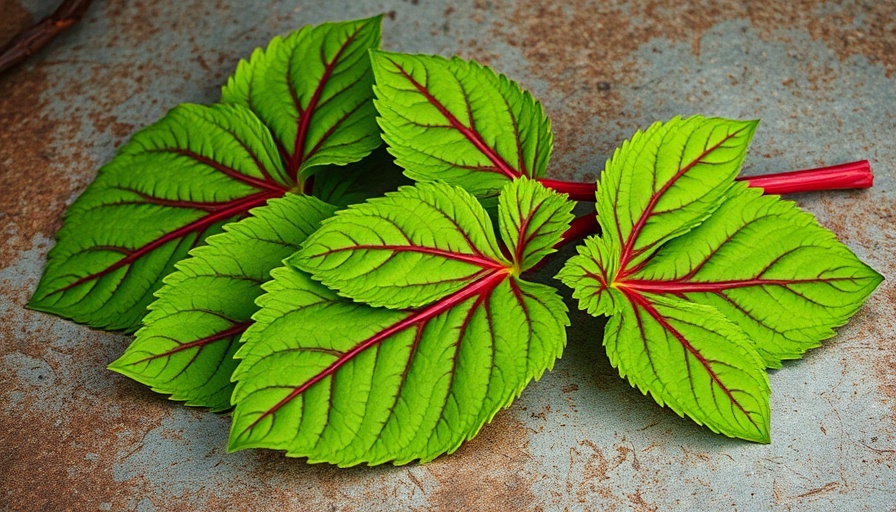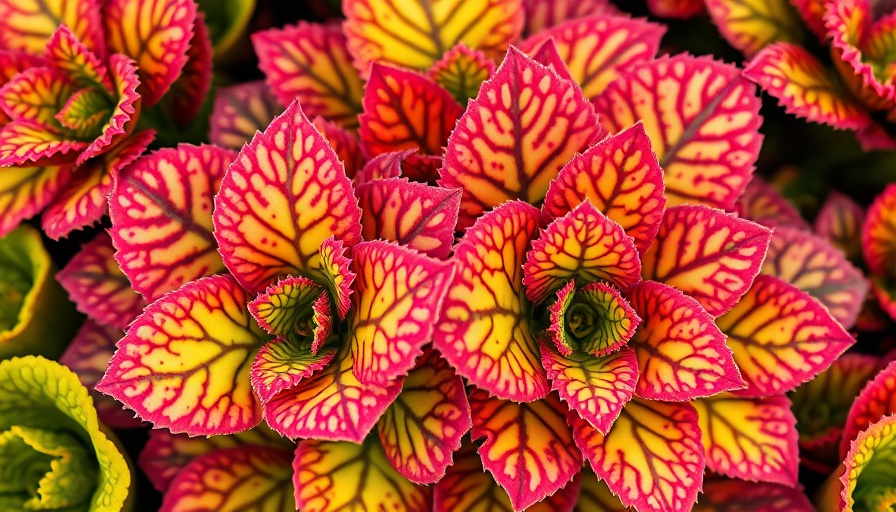
Embracing Blue: Transform Your Garden with Native Wildflowers
Introducing native blue wildflowers to your landscape is not just about aesthetics; it's a commitment to sustainability and biodiversity. Blue flowers create a vibrant backdrop that enhances garden designs while supporting local wildlife. Each of the flowers listed below thrives in its appropriate region, minimizing the need for extensive care and resources—perfect for any gardener wanting to make a positive environmental impact while beautifying their space.
Why Choose Native Flowers for Your Garden?
Native plants are well-adapted to local climates, soil types, and pest conditions. This natural resilience means they require less water, fewer fertilizers, and minimal pest control, making them an environmentally-friendly choice. Additionally, native blue wildflowers attract beneficial wildlife such as pollinators, including bees and butterflies, enriching the garden’s ecosystem.
15 Stunning Native Blue Wildflowers to Consider
Here are 15 outstanding native blue wildflowers to enhance your garden:
- Blue Flag Iris: Thrives in moist environments, this striking perennial features beautiful showy blossoms, making it ideal for pond borders.
- Bluehead Gilia: A resilient annual with globe-like flowers that attract butterflies, perfect for rock gardens.
- Bottle Gentian: Known for its unique closed buds that only open in cooler weather, this flower adds a twist to garden designs.
- Common Hepatica: A blessed addition in the shade with delicate flowers that brighten woodland gardens.
- Colorado Blue Columbine: The state flower of Colorado, these elegant blooms signal spring and attract hummingbirds.
- False Indigo: Known for its bushy structure and deep blue flowers, this perennial is a standout in any garden.
- Great Blue Lobelia: Showcases upright spikes of blue flowers, best suited for wetter areas, enhancing your garden's verticality.
- Lewis Flax: This annual blooms annually in the garden, adding a burst of blue to planting spaces that catch the eye.
- Mealycup Sage: An aromatic perennial that not only brings color but attracts pollinators, making it a gardener's favorite.
- Miniature Lupine: A small but mighty perennial with dense flower clusters, perfect for smaller garden spaces.
- Narrowleaf Blue-Eyed Grass: This unique flower resembles grasses but offers a delightful surprise with its charming blossoms.
- Prairie Bluebells: Plentiful in prairies, their charming color blooms in early spring beautifully interspersed among other flowers.
- Texas Bluebonnet: A true icon in Texas, they cover fields with blue during spring, showcasing their appeal and resilience.
- Virginia Dayflower: Ideal for woodland gardens, this charming perennial brings light and color to shadier spots.
- Wasatch Gentian: A rare beauty with deep blue hues, perfect for colder climates, making it a valuable addition.
Gardening Tips for Maintaining Native Blue Wildflowers
Integrating these native plants into your garden requires understanding their specific needs. Here are some practical gardening tips:
- Soil Preparation: Ensure your selected area has well-draining, nutrient-rich soil. Conduct a soil test to treat deficiencies.
- Irrigation Management: While native plants require less water, establishing them first may need regular watering.
- Mulching: To conserve soil moisture, use organic mulch, which can also suppress weeds.
- Seasonal Pruning: Regularly prune spent flowers to encourage new growth and prevent overcrowding.
- Pest Monitoring: Keep an eye out for pests, but remember that native plants will often have natural predators to keep populations in check.
Reconnecting with Nature through Gardening
Gardening with native plants fosters a deeper connection with the ecosystem. By planting blue wildflowers, not only do you create a stunning visual impact, but you also contribute to restoring habitats for numerous organisms. Each flower serves as a crucial food source for pollinators and other wildlife, reinforcing the delicate balance of our local environments.
Make Your Garden a Haven for Pollinators
By choosing native blue wildflowers, you transform your garden into a safe haven for pollinators. These plants not only provide food but also shelter, creating a thriving ecosystem right in your outdoor space. Their presence can boost pollinator populations which are essential for overall plant reproduction and health. This simple act of landscaping can lead to bigger environmental impacts, promoting biodiversity and resilience in local habitats.
Join the Movement Towards Sustainable Gardening
As you plan your garden, consider adopting sustainable practices and planting native species. Embrace gardening as a dynamic way to enhance your surroundings while supporting local wildlife. It's not just about aesthetics—it's about fostering a sustainable habitat that reaffirms your connection to nature. Every plant you choose sheds light on the importance of preserving our environment.
 Add Row
Add Row  Add
Add 




Write A Comment